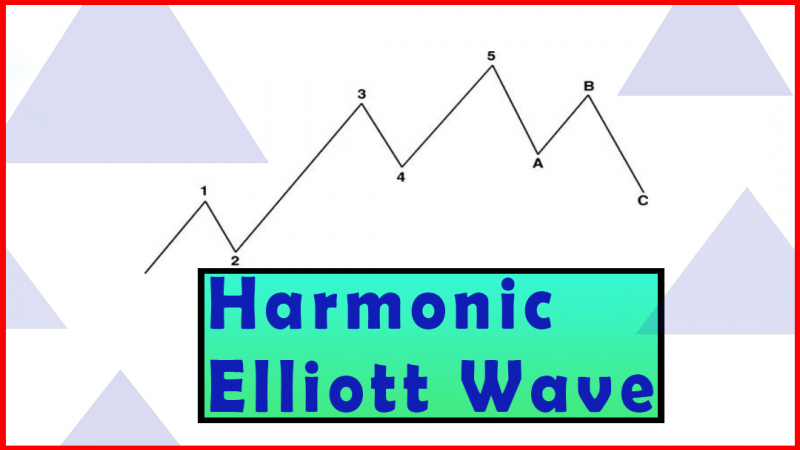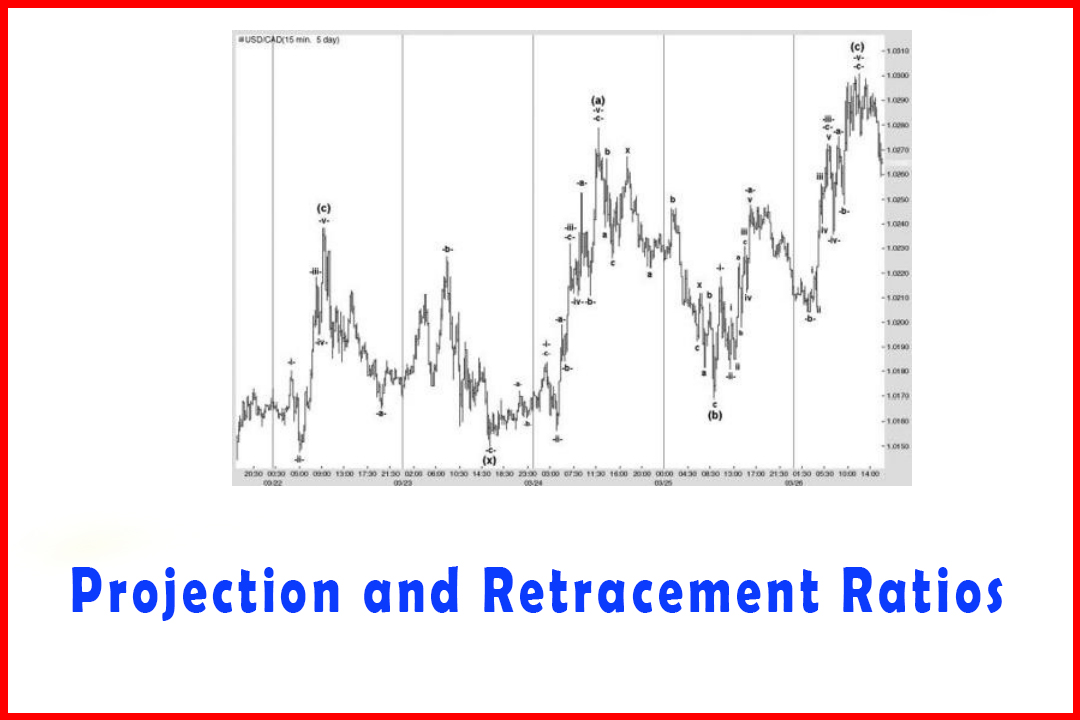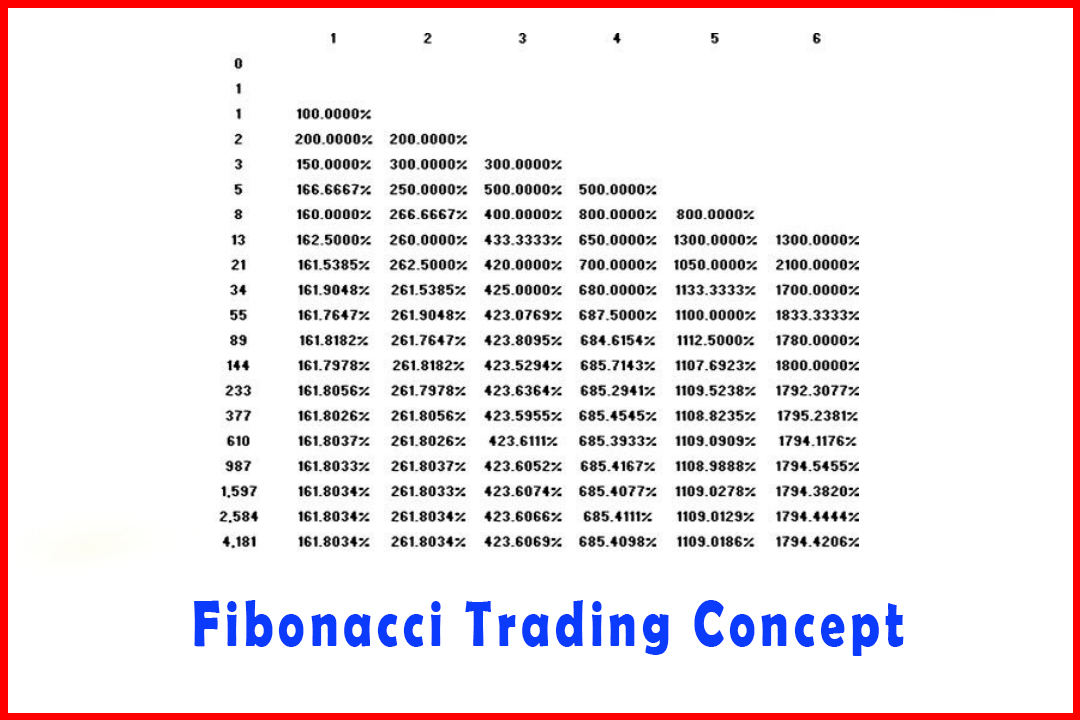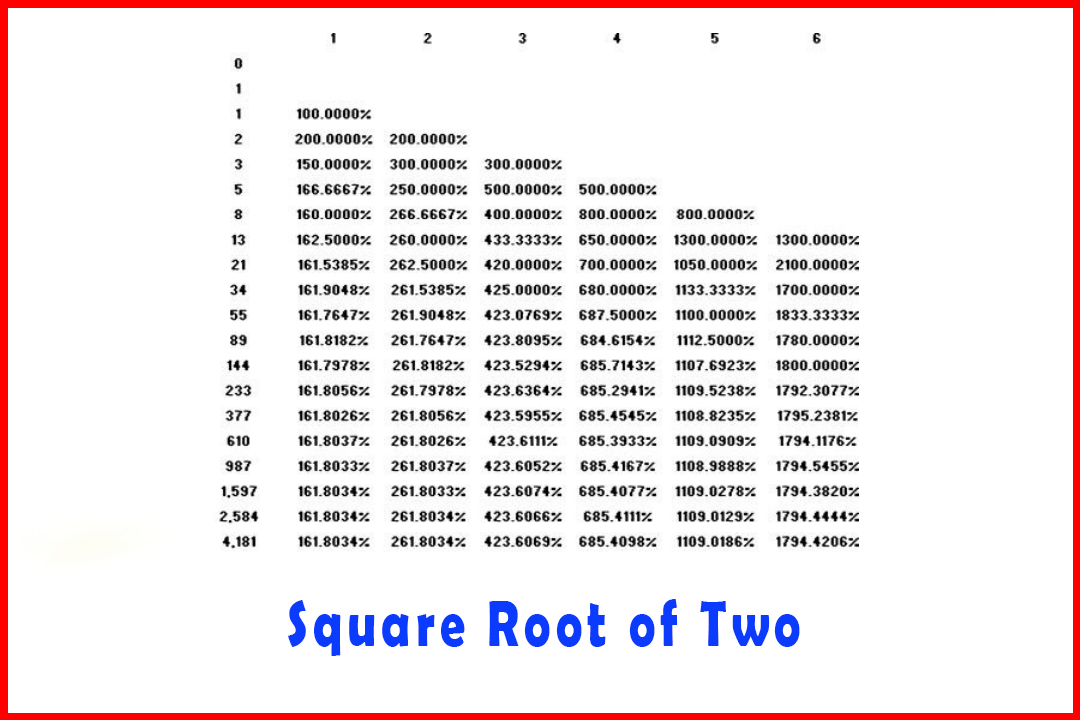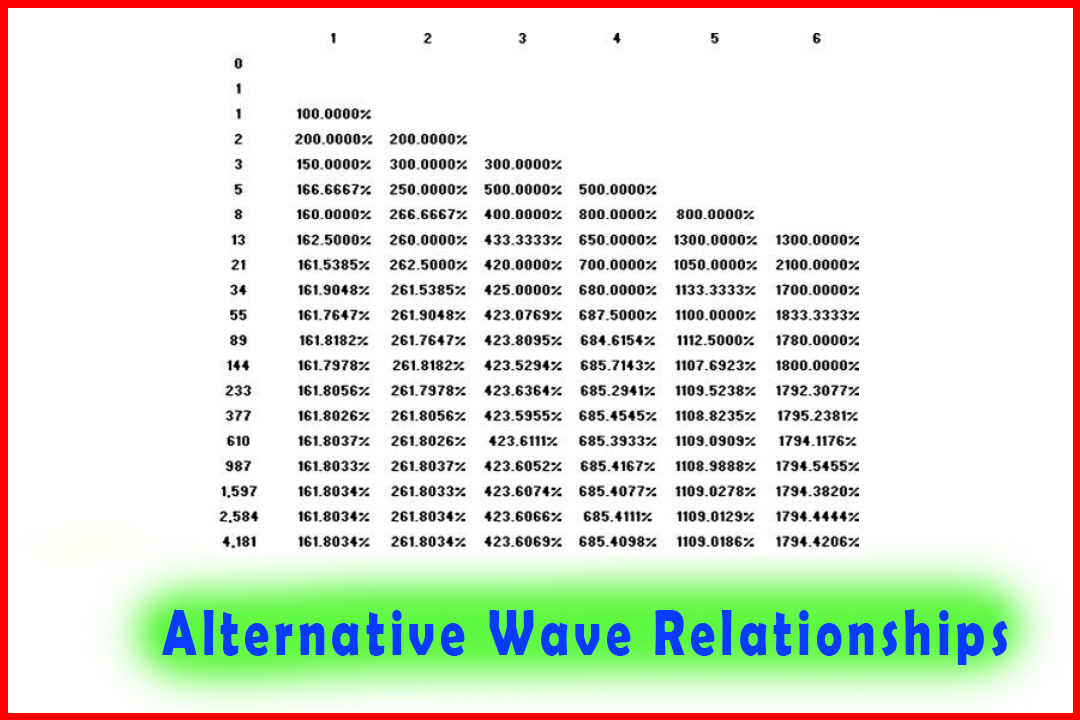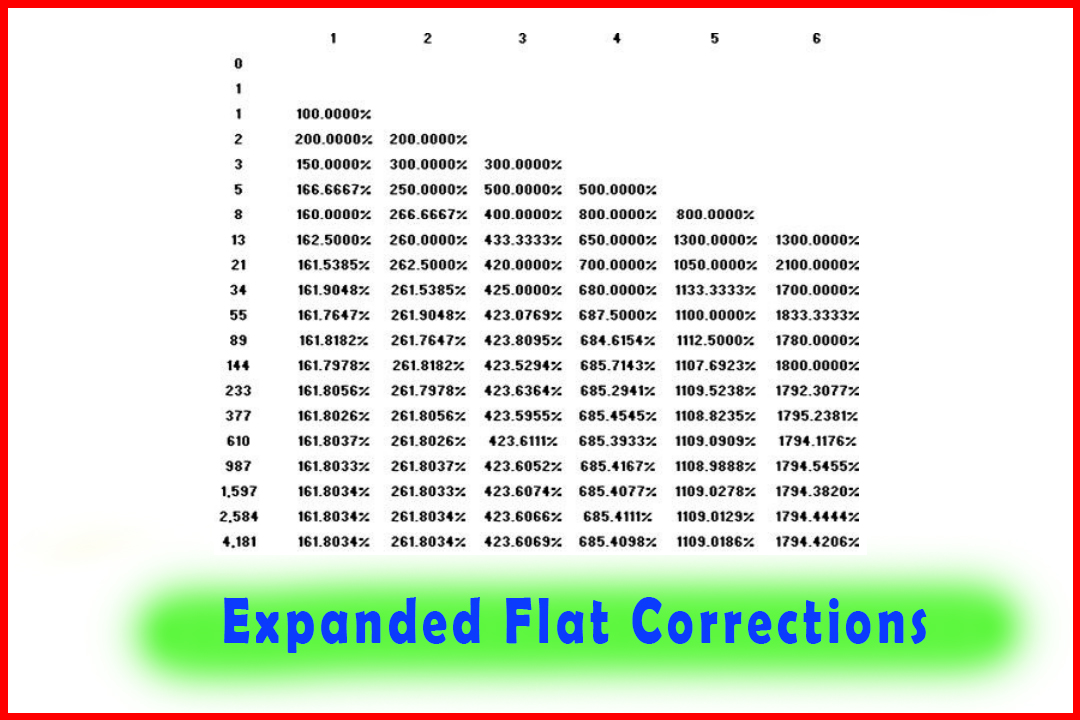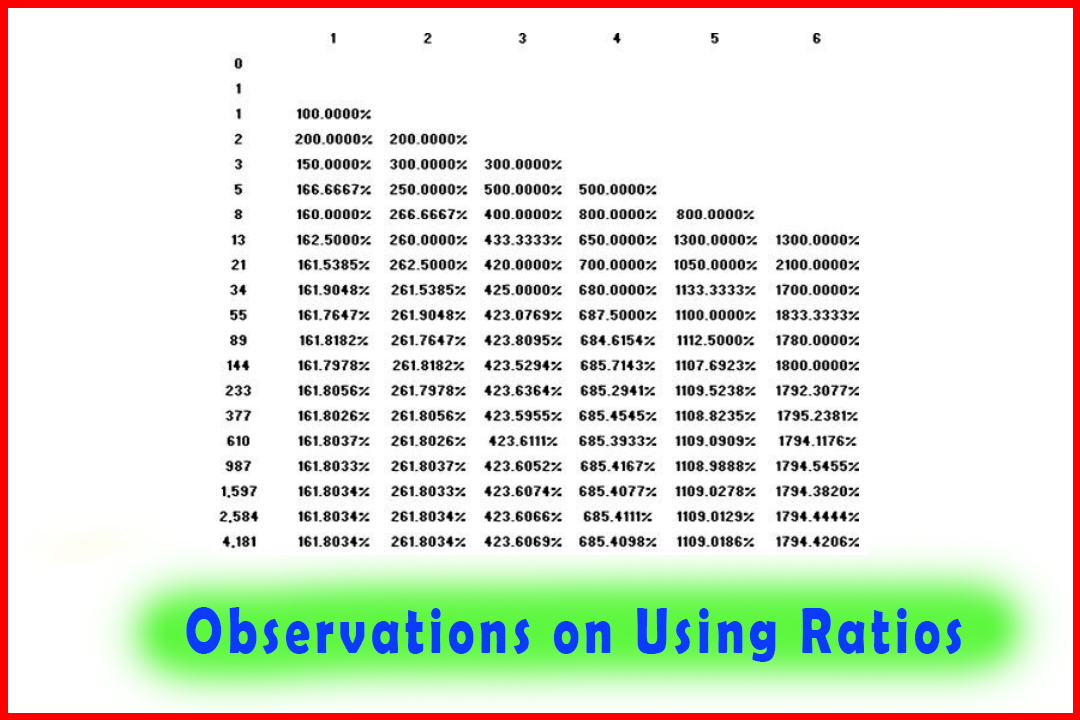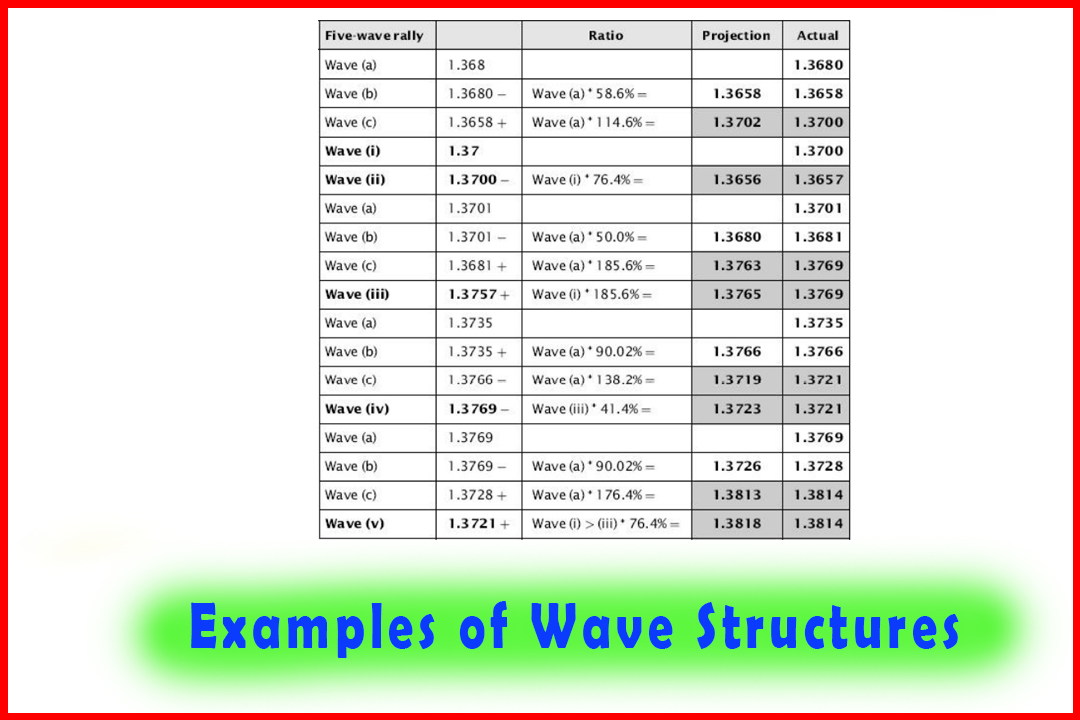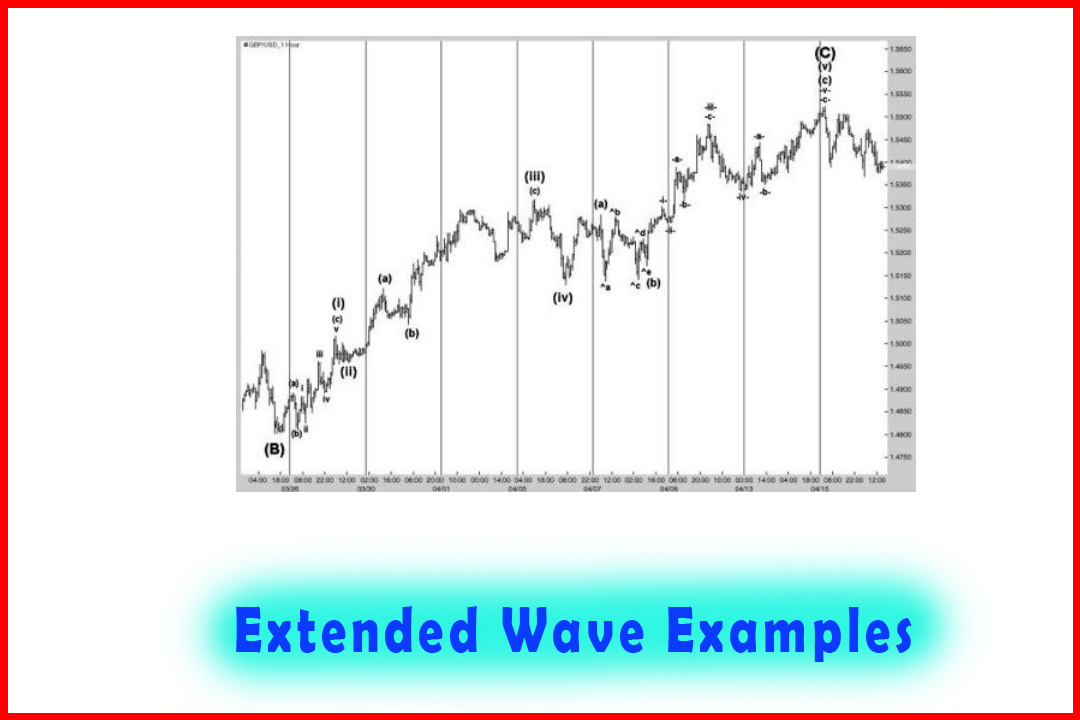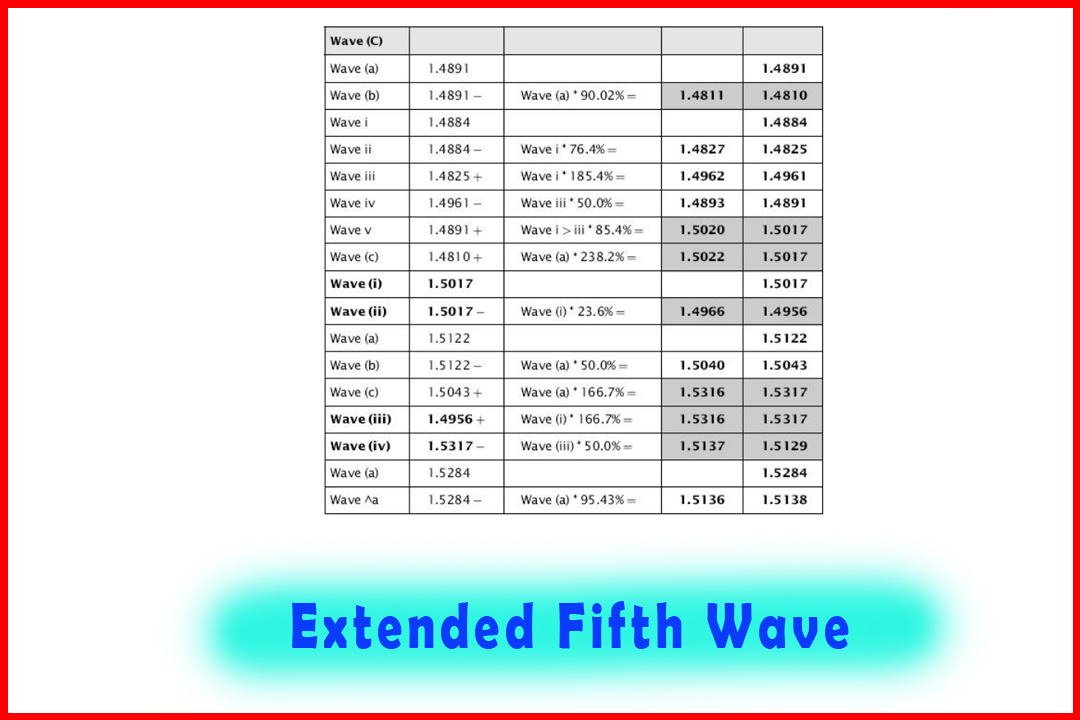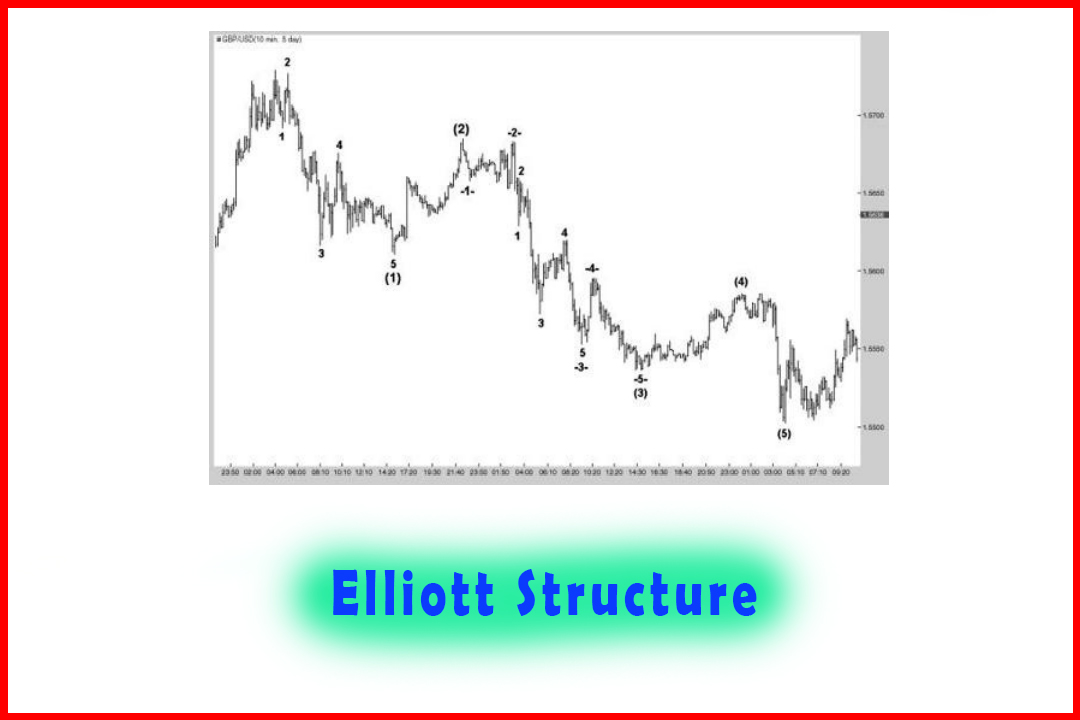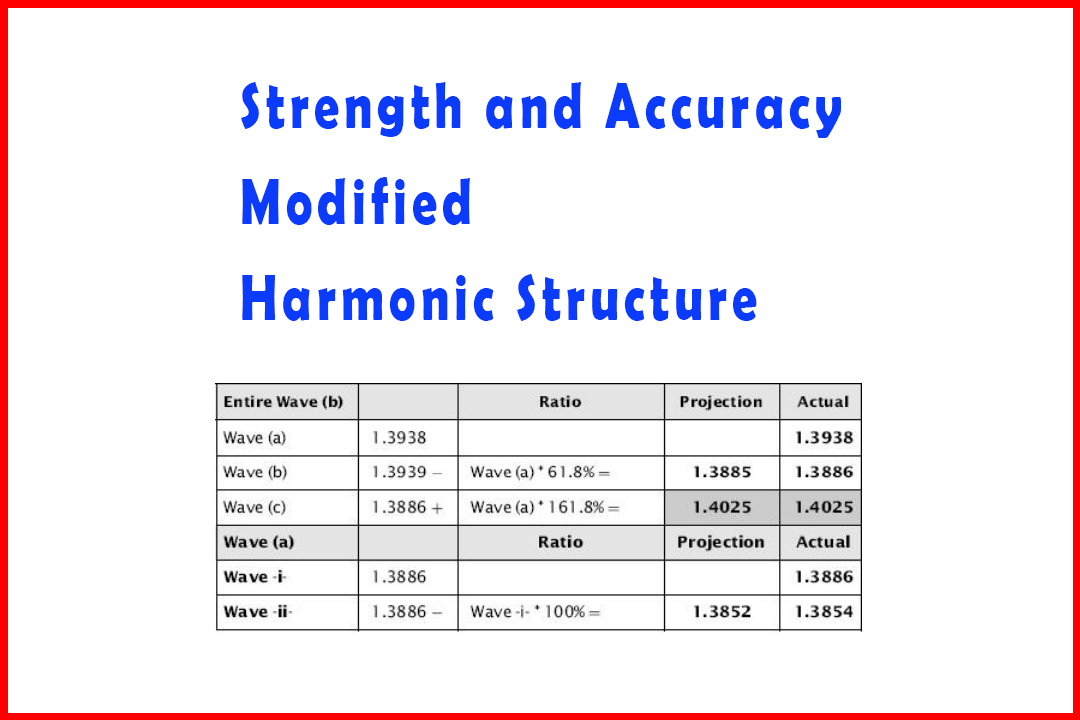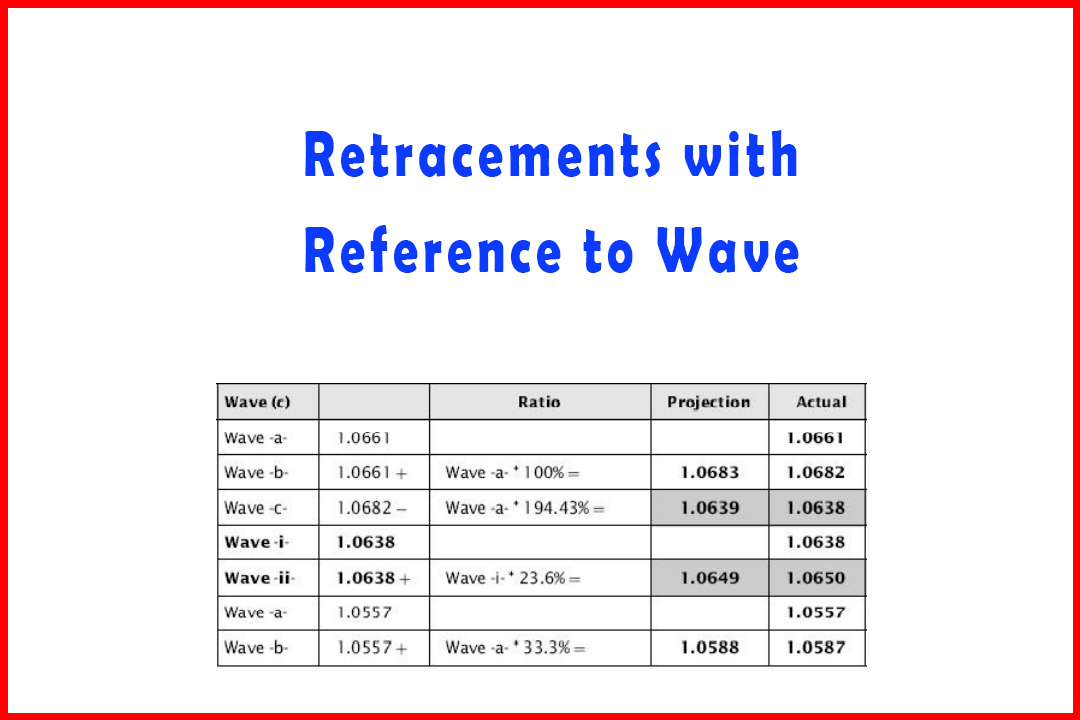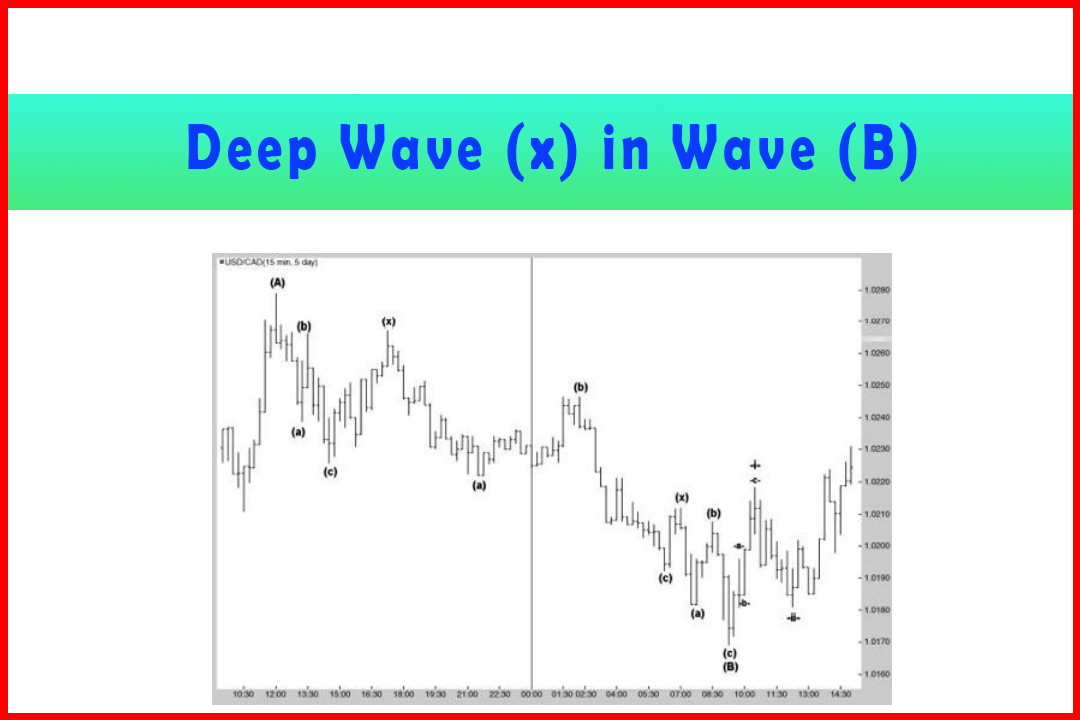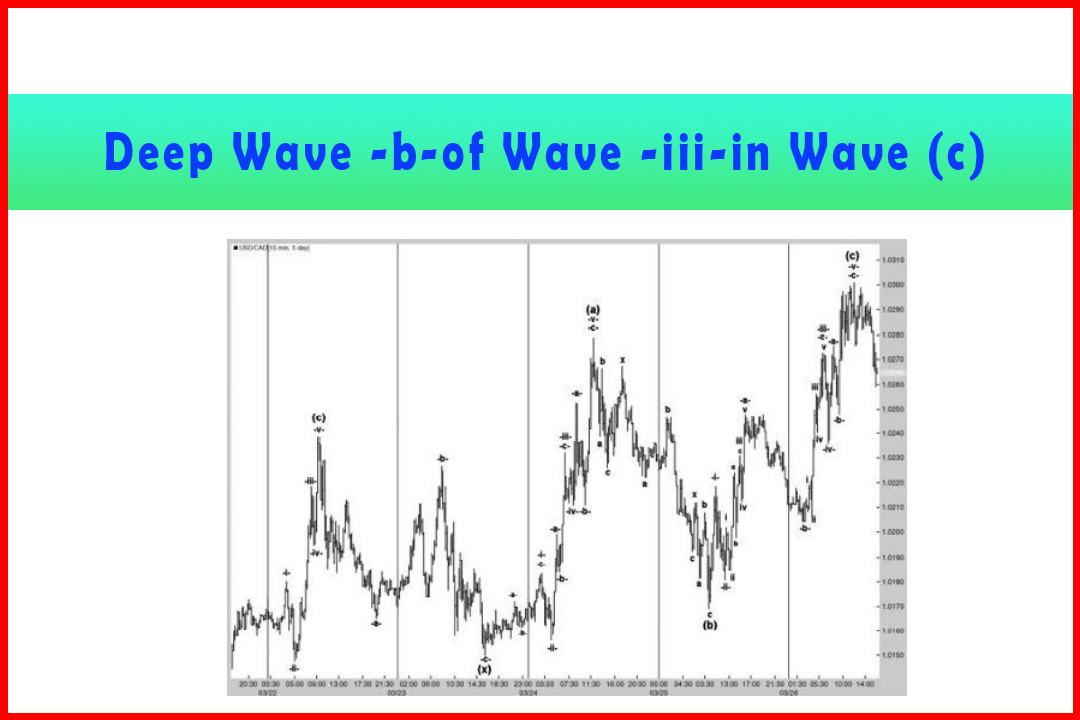Common Wave Relationships
Fibo Retracement, What is Fibonacci, Fibonacci Trading Concept, Fibo basics, Types of waves
Course: [ Harmonic Elliott Wave : Chapter 4: Projection and Retracement Ratios ]
Elliott Wave | Forex | Fibonacci |
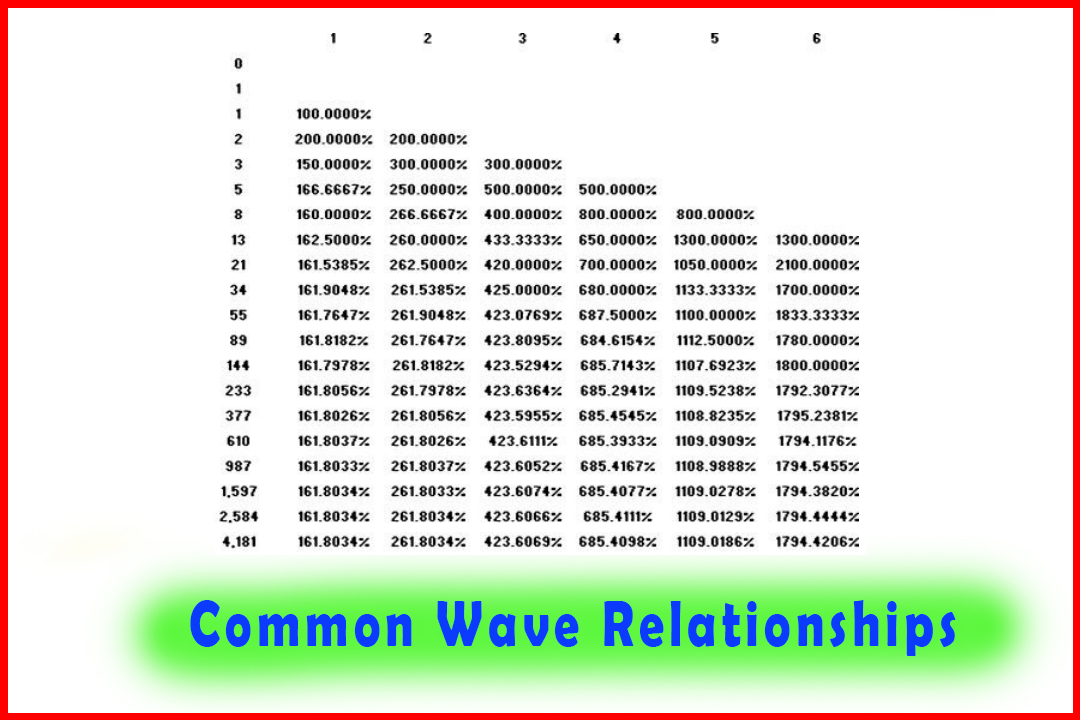
Here I shall provide the wave relationships most often noted in each wave position.
Common Wave Relationships
Here
I shall provide the wave relationships most often noted in each wave position.
Wave (i)
There
is no relationship to any prior wave given that it is the start of a five-wave
sequence. If we are to consider any stalling point then it may be the span of
the prior Wave (b) of Wave (v) or possibly close to the most recent swing high
or low.
Where
we can begin to identify where Wave (i) will complete is by observing the most
frequent projections in Wave -c-of the anticipated Wave (i).
Wave (ii)
Wave
(ii) is a retracement of Wave (i).
This
is probably the most difficult to assess before it starts. If looking at a
straight retracement ratio then I have seen these to be as shallow as 14.6% and
as much as 100%. We can also consider the span of the Wave -b-of Wave (i).
When
observing a Wave (ii) in a five-minute chart, for example, it is often
difficult to really observe the individual waves that construct the correction,
whether this be a simple abc move, a Triple Three, or an even more complex
correction. However, in a daily chart we can see the development of Wave (ii)
within the shorter time-frame charts and observe the sequence of individual abc
moves.
Wave (iii)
Wave
(iii) is an extension of Wave (i) and projected from the end of Wave (ii). It
is in Wave (iii) that we can begin to consider more reliable and consistent
projection ratios.
The
most common ratios are: 176.4%, 185.4%,
190.02%, 223.6%, 276.4%, and 285.4%.
Less
frequent ratios are: 138.2%, 166.7%%,
and 261.8%.
Occasional
ratios are: 123.6%, 238.2%, 361.8%,
423.6%, and 476.4%.
Needless
to say, when reviewing a chart all potential ratios should be kept in mind as
long as they are both accurate and the projections in Wave (c) also match that
target.
Wave (iv)
Wave
(iv) is a retracement of Wave (iii).
Wave
(iv) is one of my favorite corrections since, as long as the Wave (ii) and Wave
(iii) of the sequence have been identified accurately and we have noted the
implications of alternation with Wave (ii) or Wave (b), we have a much stronger
basis to identify the completion of this pullback.
For
shallow retracements: 14.6%, 23.6%,
33.3%, and 38.2%.
For
fuller retracements: 41.4% and 50%.
For
deep retracements: 58.6% and
infrequently 61.8% or 66.7%.
It
is also important to understand the underlying characteristics of the
particular market that is being analyzed. For example, I find that Dollar-Swiss
Franc and British Pound-Dollar have a greater tendency to stall at 41.4% and
58.6%.
Wave (v)
Wave
(v) is an extension of the entire move from the start of Wave (i) to the end of
Wave (iii) and projected from Wave (iv).
Again,
having identified Wave (iv) it is much easier to develop projections for Wave
(v). In particular the projections in Wave (v), given they will be coming at
the end of a Wave (C) of one higher degree, should also match the target of
this higher degree.
The
majority of projection ratios are: 61.8%,
66.7%, or 76.4%.
In
a truncated Wave (v), common ratios are: 58.6%
and less frequently 50%.
In
an extended Wave (v), common ratios are: 85.6%,
100%, 114.4%, and occasionally 123.6% and 138.2%.
Wave (A)
As
with Wave (i), there is no uniform way of identifying where this will stall as
it is not related to any prior wave. It is possible to consider the prior Wave
b of
Wave
(v) and occasionally the prior Wave (iv), especially when this is a key swing
high or swing low in a trend. Markets tend to shun testing a swing low/high on
the first test. Other areas to consider are pivot levels, which I find of
particular benefit.
If
this is a Wave (A) in a daily chart then again we should be watching the
development of the five waves that construct Wave (A) and matching the
projections in the internal Wave v with any of the prior Wave b of Wave (v),
the prior Wave (iv), or pivot level.
Wave (B)
Wave
(B) is a retracement of Wave (A)
Being
the correction within a correction, Wave (B) can prove to be the most
complicated and erratic of all waves. It is probably one where the most errors
can be made. We could be talking about a simple Wave (B) within a Zigzag or a
complex correction such as a Flat, Expanded Flat, or Triangle correction.
Depending on which area of the entire wave sequence in which the Wave (B) is
developing, we may also have to consider the impact of alternation.
If
looking at a straight retracement ratio then I have seen these to be as shallow
as 14.6% and as much as 100%. We can also consider pivot levels and key swing
highs or swing lows.
When
observing a Wave (B) in a five-minute chart, for example, it is often difficult
to really observe the individual waves that construct the correction, whether
this be a simple abc move, a Triple Three, or an even more complex correction.
However, in a daily chart we can see the development of Wave (B) within the
shorter time-frame charts and observe the sequence of individual five- wave
moves.
Wave
(B) of Wave (III) tends to be 50% on average, but unlike any other Wave (B)
position it is subject to the guideline of alternation and may be very brief if
Wave (II) has been exceptionally deep, or alternatively very deep—as much as
66.7%—if Wave (II) has been exceptionally shallow.
Wave (C)
Wave
(C) is an extension of Wave (A) projected from the end of Wave (B).
The
most common ratios are: 100%, 105.6%,
109.2%, 114.4%, 138.2%, and 161.8%.
Less
frequent ratios are: 76.4%, 85.6%,
123.6%, and 176.4%.
Occasional
ratios are: 123.6%, 223.6%, and 261.8%
or as short as 61.8%.
Needless
to say, when reviewing the targets for Wave (C) it is important to relate this
to the targets in both the next higher degree and also lower degree. Therefore,
take note that the internal Wave v of the Wave (C) should match the extension
of Wave (A) and also, if this is part of a Wave (iii) or Wave (v), the
potential projection targets for this higher degree.
Wave (x)
Generally
this intermediate corrective wave between Zigzag patterns tends to retrace in
the same way as a Wave (b). However, one common guideline is that if the
previous Wave (b) was very deep, perhaps as much as 76.4%, then Wave (x) will
likewise have a greater tendency to be also deep.
Triangles
Wave
∧a will normally retrace quite
deeply. In a Wave (iv) position this will often be quite sharp and to at least
50% of Wave (iii), and possibly more as long as this does not imply a move too
close to the prior Wave (b) of Wave (iii).
Wave
∧b: Will commonly be a 76.4% retracement of Wave ∧a, or occasionally 85.6%.
Wave
∧c: 66.7%, 76.4% of Wave Aa projected from the end of Wave ∧b.
Wave
∧d: 66.7% to 76.4% of Wave Ab from the end of Wave ∧c.
Wave
∧e: In my experience I have found this to normally be a simple Zigzag, but
it rarely moves beyond 61.8% to 66.7% and may, on occasion, be less than 61.8%.
Harmonic Elliott Wave : Chapter 4: Projection and Retracement Ratios : Tag: Elliott Wave, Forex, Fibonacci : Fibo Retracement, What is Fibonacci, Fibonacci Trading Concept, Fibo basics, Types of waves - Common Wave Relationships
Elliott Wave | Forex | Fibonacci |
